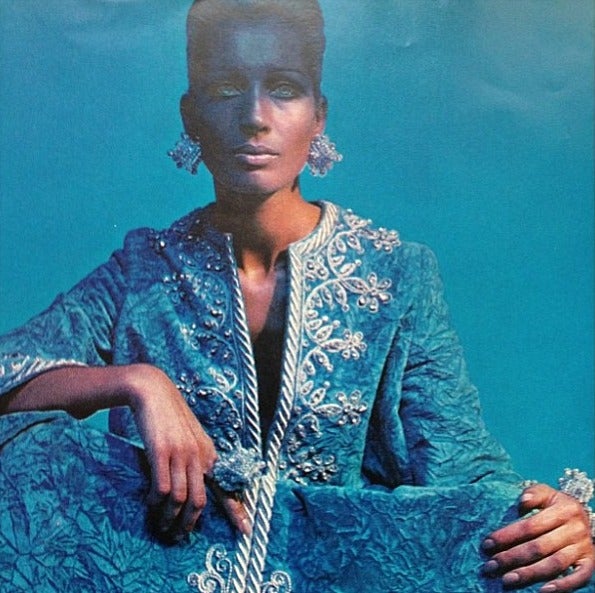Sewing Sunday - Melody Fashions: 1960s
Right before Melody came out, I had been venting to my mom about how little diversity American Girl has. I asked her (and myself) "why doesn't AG do the obvious thing and make an African American girl from the 1960s?!". Turns out AG was finally getting around to that, making Melody the third African American character done by American Girl. The 1960s are still somewhat fresh in our minds since millenials have parents who were born in or maybe even grew up in the 1960s.
This was a perfect time period to have a African American character in, since there is more triumph (I guess) to be had in the 60s. Martin Luther King Junior, Rosa Parks, and dozens of others became household names for taking a stand against the oppressive white man. Marvin Gaye and the Supremes had a firm grip on the Motown music charts. The first beauty magazine aimed at African American women, Essence, was published starting in 1969. "Black is Beautiful" was the order of the day.
There's more to the 1960s than the (long overdue) change in society. Fashion also changed to match the stark contrasts between oppression and freedom. If you want the whole picture, you may want to check out the past Hair Thursday for 60s hair styles...
The most obvious thing to happen in the 1960s fashion landscape was the rebirth (if you will) of African traidition [1]. This was helped by French designer Yves St. Laurent (who grew up in Northern Africa) [1] who introduced a line of African clothing in 1967 [2]. Both men and women started wearing loose, comfortable shirts and robes [1] (called dashikis and caftans). The fabric used was often weaved in Africa [1] (for more information on African textiles, check this out).
However, mainstream American fashion still focused more on white women than black women. The Supremes (or Diana Ross & The Supremes) rivaled The Beatles in popularity and are the best selling vocal group in the United States' history. I doubt that they would have been so popular with the fraction of the population who wanted to keep the races segregated if they went around with afros and beautiful African clothing. The Supremes are known, fashion-wise, for wearing elegant clothes. As Mary Wilson, a The Supremes member, and the group's unofficial historian said: "Even when we were 15 years old and auditioning for Motown Records, we were wearing pearls we bought from Woolsworth."
The decade of the 60s encapsulated every type of trend: from the prim and proper of the early decade, the tackiness of the mid-decade to the mellowing trends towards the end of the decade to signal the start of the hippie 70s. If I were to go over every single trend change, this would become an essay really quick. There are too many websites to count that talk about the fashion of the 1960s which can't be said for the 1850s and 1860s like I covered the previous week. I recommend this website, but there are much more that are only a googling away.
Sources
This was a perfect time period to have a African American character in, since there is more triumph (I guess) to be had in the 60s. Martin Luther King Junior, Rosa Parks, and dozens of others became household names for taking a stand against the oppressive white man. Marvin Gaye and the Supremes had a firm grip on the Motown music charts. The first beauty magazine aimed at African American women, Essence, was published starting in 1969. "Black is Beautiful" was the order of the day.
There's more to the 1960s than the (long overdue) change in society. Fashion also changed to match the stark contrasts between oppression and freedom. If you want the whole picture, you may want to check out the past Hair Thursday for 60s hair styles...
The most obvious thing to happen in the 1960s fashion landscape was the rebirth (if you will) of African traidition [1]. This was helped by French designer Yves St. Laurent (who grew up in Northern Africa) [1] who introduced a line of African clothing in 1967 [2]. Both men and women started wearing loose, comfortable shirts and robes [1] (called dashikis and caftans). The fabric used was often weaved in Africa [1] (for more information on African textiles, check this out).
 |
| Ok, so this is from the 70s... but I couldn't resist! Both men and women would wear these shirts. [source] |
| The woman in the front is wearing a dashiki [source] |
 |
| A high-end fashioned caftan [source] |
However, mainstream American fashion still focused more on white women than black women. The Supremes (or Diana Ross & The Supremes) rivaled The Beatles in popularity and are the best selling vocal group in the United States' history. I doubt that they would have been so popular with the fraction of the population who wanted to keep the races segregated if they went around with afros and beautiful African clothing. The Supremes are known, fashion-wise, for wearing elegant clothes. As Mary Wilson, a The Supremes member, and the group's unofficial historian said: "Even when we were 15 years old and auditioning for Motown Records, we were wearing pearls we bought from Woolsworth."
The decade of the 60s encapsulated every type of trend: from the prim and proper of the early decade, the tackiness of the mid-decade to the mellowing trends towards the end of the decade to signal the start of the hippie 70s. If I were to go over every single trend change, this would become an essay really quick. There are too many websites to count that talk about the fashion of the 1960s which can't be said for the 1850s and 1860s like I covered the previous week. I recommend this website, but there are much more that are only a googling away.
Sources
- http://www.fashionencyclopedia.com/fashion_costume_culture/Early-Cultures-African/African-Americans-Dress-During-the-Civil-Rights-Movement.html
- https://museeyslparis.com/en/biography/collection-africaine-pe


Comments
Post a Comment